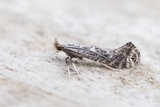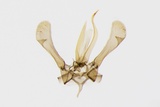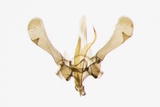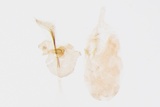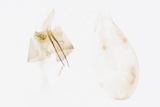Parornix torquillella (Zeller, 1850) Species
Last modified: June 6, 2025, 10:37 a.m.
A common species in Belgium, recorded from many localities.
Details
- Classification
- Family: Gracillariidae > Subfamily: Gracillariinae > Tribus: Parornichini > Genus: Parornix > Species: Parornix torquillella
- Vernacular names
- Fraaie zebramot (NL), Blackthorn slender (EN), Große Schlehen-Randfaltenmotte (DE)
- First mention in Belgium
- De Fré Ch. 1858. Catalogue des Microlépidoptères de la Belgique. — Annales de la Société entomologique belge 2: 45–162. On page 147. view page
- Status
-
Native
Distribution
Imago
Forewing brownish grey with a row of inconspicuous, small whitish striae along the costa; some brownish spots in the middle of the wing and near the inner margin. Identification of the adults is difficult without knowledge of the larval host plant, because the resemblance with other Parornix species, and genitalia should be studied.
Caterpillar
Yellowish to yellowish green, light brown head capsule. Legs yellowish green to pale brown (in Parornix finitimella the legs are black). First prothoracic segment with two dark brown to blackish spots, sometimes diffuse (in Parornix finitimella four such spots), but be careful with identification as this character is variable.
Mine
The first instar makes a short, narrow gallery on the underside of the leaf, soon widening into a blotch and later on, by applying some spinning, into a weakly inflated tentiform blotch with a quadrangular shape when it is situated between two veins, or triangular when it is situated in a vein axil. The dark frass is concentrated in a corner of the mine. The mine becomes transparent when almost all the tissue is consumed.
See also gracillariidae.net and bladmineerders.be.
Bionomics
The free-living instars fold a leaf margin downwards and continue feeding on the leaf parenchyma within this fold. On small leaves, this fold can occupy the entire leaf.
Pupation in the fold, and hibernation between leaf litter on the ground.
The adults rest during the day in the foliage and they become active at dusk and during the night. They come to light.
Flight periods
The adults fly in two generations from late April towards early September.
Observed on
- Host plant (species):
- Prunus spinosa and Prunus domestica
The larvae feed primarily on Prunus spinosa, but they have also been recorded from Prunus domestica.
